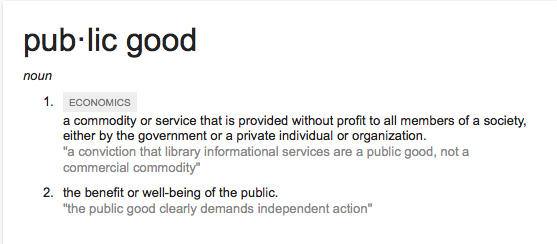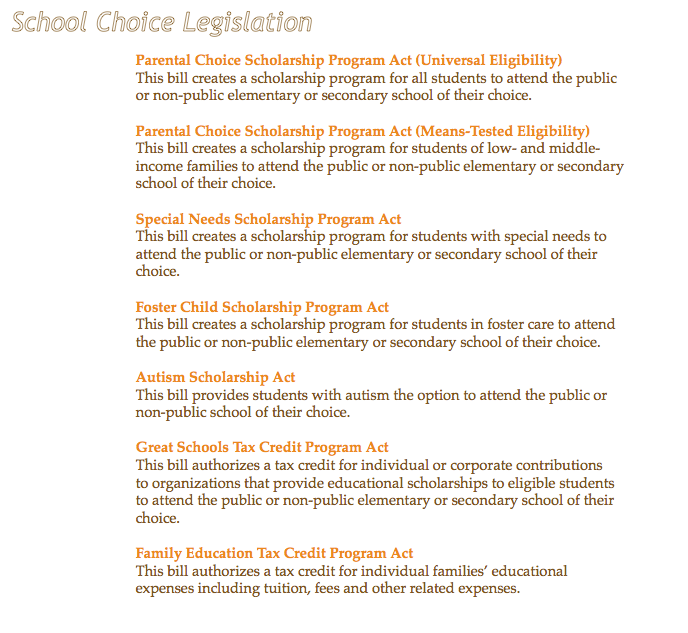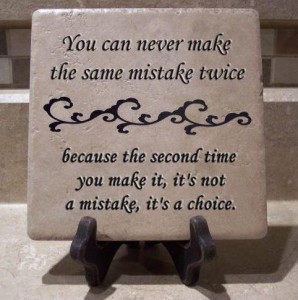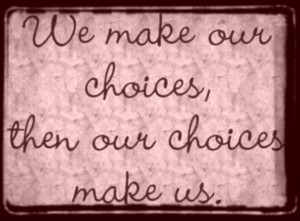Parents, educators, and politicians moved forward with the illusion of reform based on individual “choice” without considering the public good.

If public education is a public good, what choice does the public have in deciding how it is provided?
We put choice into education law without really having a conversation about our choices.
The Power of the Word
In Understanding the Psychology of the American Idea of Choice, researchers noted that Americans respond more strongly to the word “choice” than people from other countries. They found that when we think about our lives framed in terms of choices, it …
- “reduces our support for public policies that promote greater equality,…
- leads us to feel less concerned about the growing gap between the wealthy and the poor,…
- leads us to feel less empathy towards others who have experienced negative life events,…
- [shifts] attitudes in favor of policies that promote individual freedom.”
At the heart of the issue of “choice” is our strongly embedded love of freedom. There’s nothing wrong with that, except, these findings may very well have been used against us. Overall, researchers found the effects that the word “choice” has on us seems “to bode poorly for solving social problems that require cooperation.”
Public education of children is a cooperative effort.
Choice Laws
The education law of the land, No Child Left Behind (now 12/5/15 called Every Student Succeeds Act), is a law promoting school choice.
It didn’t used to be. It used to be a law promoting quality and equal opportunity.
But even if we eliminated the big bad hand of the federal government in education reform laws, state charter laws abound and ALEC is ready for the State to control education reform.
The American Legislative Exchange Council (ALEC) is advancing the “principles of free markets” and makes claims that they promote…
“public private partnerships between America’s state legislators and concerned members of the private sector, the federal government, and the general public.”
ALEC is looking out for the general public?
ALEC supports “more choices in education both as a matter of principle and as a promising solution to the increasing challenges facing America’s K-12 education system.”
With charter laws in place across the country, here’s ALEC’s smorgasbord of other “solutions” to choose from ….
But is “choice” a solution for the American K-12 education system?
The Assumption of Choice as a Reform
The basic assumption is that ALL parents are very savvy and their school choices will be well-informed. They will be able to judge the schools accurately and won’t get sold on advertising gimmicks similar to how the country was deceived by test score comparisons.
I admit my bias here; I volunteered in classrooms for 11 years and saw these same kids with their families in different settings in my community. This is my opinion…
The ignorant crack head is not “savvy”; the single working mother struggling to get everything done in a 24 hour day doesn’t have time to adequately do her homework on schools, she isn’t “savvy”; the homeless but proud (and yes, I can put a face to them) can only use the library computer for a limited time, not enough opportunity to become “savvy”; and those parents whose children are their translators have a real barrier to becoming “savvy.”
Put another way in “Choice or Commonality” by Martha Minow, a law professor and inspiration to a young Barack Obama,
“if educational responsibility remains solely on the immediate family, ‘choice’ may take place in a world of insufficient numbers of quality schools, inadequate information about the stakes and alternatives, and large numbers of people unable to use the choice system effectively. This state of affairs means choice for some and not for others, and whether a child’s educational needs are met will depend on her parents’ ability to choose.”
So with federal education law originally meant to support the public education system in order to break the “poverty-ignorance-ignorance-poverty cycle” by providing ALL children with quality education, we know “choice” cannot logically get us to equal educational opportunity.
What problem is fixed by “choice” through charters?
Quality? You can put the word “quality” in front of “charter” in law but it doesn’t make it so. In the new federal law set to replace No Child Left Behind they use the term “high quality” while others say “high-performing”; still, words don’t make it so. Only 17% of charter schools perform better than traditional public schools. Unequal quality isn’t fixed and that is the major problem.
While the problem being fixed by choice through charters is illusive or non-existent, the growing troubles are well documented in this Washington Post article, A Dozen Problems with Charter Schools.
- Most are not helping kids.
- Some are actually hurting kids.
- Far too many are cash cows.
- The industry is rife with fraud and corruption.
- Lack of transparency and accountability.
- Skimming and weed-out strategies.
- Contribute to the re-segregation of U.S. education.
- Drain resources from struggling districts.
- Closing traditional public schools.
- Lack of innovation.
- Hard to get rid of the bad ones.
- Charters promote “choice” as solution.
As the curtain goes up on all the complications with charters, that will not slow the Choice Movement. Look at Nevada and their Universal School Choice.
Is this informed choice?
What are the risks? And really, what is the difference between shopping for a charter and shopping for education products with public money in hand? How informed will parents be, how inefficient is the system to become, how unequal will the quality be, and who will be responsible to the children left behind in the end when their parents don’t make good choices or are fooled into bad choices?
The choice to leave a school never improves that school. For certain individuals, a different school than the one they are assigned is appropriate, but those situations must be handled at the local level. They are the exception, not the general rule.
The choice this country was never given is the one to continue to strengthen and improve all schools through proven methods. The choice we never got was to put in place the best practices we know that match our students’ needs. The choice we never got was to improve the teaching profession as a nation. The choice we never got was to fund schools in a manner that is fair and reasoned.
When all reform is based on responsiveness to the needs of community members, continuous improvement happens. That’s what we have always needed, always will.
Choice is a very powerful propaganda weapon; choice is not a reform. School choice is not a solution. To create more equitable educational opportunities, continuous school improvement of every public school is the only logical solution.
But I’m not the one making this choice.
 The public must choose. Do you want public education to be a public service provided by our government, or, a commodity provided by private individuals or organizations paid for by tax dollars? This is about control. This is about how we govern our schools.
The public must choose. Do you want public education to be a public service provided by our government, or, a commodity provided by private individuals or organizations paid for by tax dollars? This is about control. This is about how we govern our schools.
This is a BIG choice. We urgently need to decide.

To be clear, I do not promote the idea of closing any child’s school – charter or not – unless of course it is falling down, unsafe, or no longer sustainable due to dropping enrollment.
Pingback: 2015 Medley #19 | Live Long and Prosper
Pingback: The Education Reform Oligarchy & Their School Choice Conversation - The Crucial VoiceThe Crucial Voice
Pingback: The Public Trust is Broken - The Crucial VoiceThe Crucial Voice
Pingback: The Purpose of Education - The Crucial Voice of the PeopleThe Crucial Voice of the People
Pingback: Wrong is Wrong: Lamar Alexander's Path of Destruction - The Crucial Voice of the PeopleThe Crucial Voice of the People
Pingback: Zombie Ideas Are Killing Public Education - The Crucial Voice of the PeopleThe Crucial Voice of the People
Pingback: The Fierce Urgency of Now | The Crucial Voice of the PeopleThe Crucial Voice of the People
Pingback: A Clear Plan: The Revolution in School Policy | The Crucial Voice of the PeopleThe Crucial Voice of the People